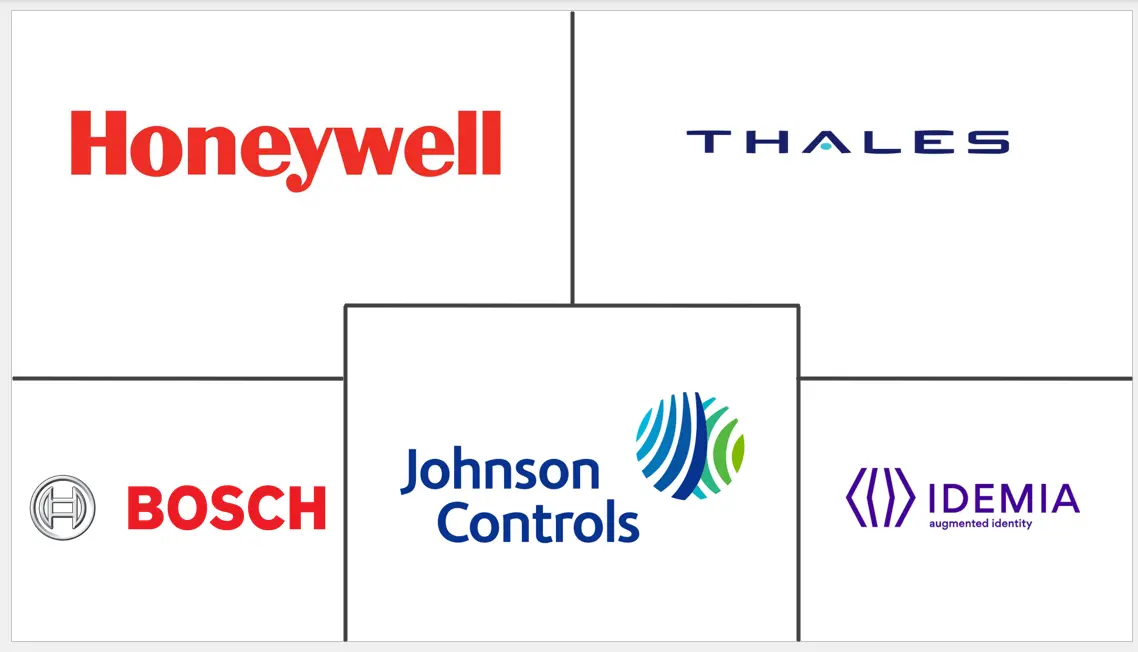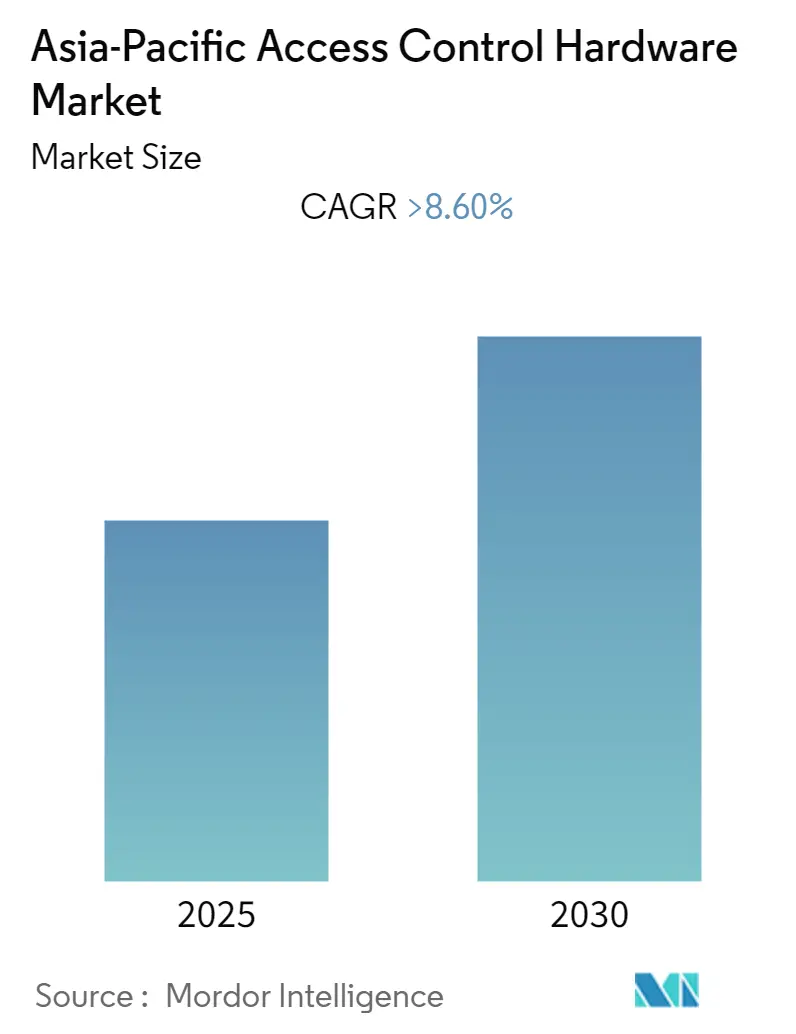
Asia-Pacific Access Control Hardware Market Analysis by Mordor Intelligence
The Asia-Pacific Access Control Hardware Market is expected to register a CAGR of greater than 8.6% during the forecast period.
- A security system that monitors and regulates access within a system and environment is known as an Access Control System (ACS). Based on the legitimacy of provided credentials, it assists in identifying entities that may have access to any regulated devices or facilities. An access control system is generally a physical operation used in high-security places such as data centers, government/military institutes, and other comparable establishments.
- Access control systems rely on access control panels and boards. The controller board is the primary security source in an access control system. When a user shows a credential to a reader, the data is delivered to the access control board. The access control board, which usually keeps a local copy of the user database, the user may decide on whether to approve credentials for access. The board is also linked to the access control door hardware, which activates an unlock and allows the user to enter after the credential is validated.
- Pattern recognition and biometric identification systems are mostly used for security purposes. They capture images, recordings, or measurements of an individual's features using acquisition devices such as cameras and scanning devices and then extract, encode, store, and compare these data using computer hardware and software. It is a highly reliable source identification technique used in surveillance and security operations.
- Contact smart cards are ideal for indoor, medium-throughput access control systems that require system flexibility. They are frequently employed in high-security establishments and can handle many people. Contactless smart card systems are suitable for high-security applications requiring higher throughput rates than contact smart card systems. Magnetic stripes, barcodes, and other methods can be incorporated into certain smart cards to handle access control.
- Physical access control systems are used to limit access to an area selectively. Physical control equipment often starts the access control process outside a facility's perimeter, primarily by controlling vehicular movement and pedestrian access near entrance points. For greater security applications, an access control system is maintained at building entrances for security purposes.
- Token and cipher systems are mechanical or electrical devices that allow the bearer to access a protected region after being authenticated. A token is a tangible object (such as an ID card or key fob) carried by the user for usage with the token system. Cipher locks accomplish a similar purpose by requiring a personal identification number (PIN) or code to be entered to get access.
- The COVID-19 pandemic has increased the need for access control hardware market. The COVID-19 pandemic spread made the organization to check a person's temperature using biometrics and vein recognition technology; along with that it helped in identifying people who may be contaminated with illnesses and viruses. As a result, the demand for access control systems skyrocketed during COVID-19.
Asia-Pacific Access Control Hardware Market Trends and Insights
Increasing adoption of face and fingerprint biometric capabilities
- The Asia-Pacific Access control hardware market is expected to grow high in the future. There is increased adoption of access control systems by the government and defense sector. For instance, the access control hardware system can be used in identifying security threats, used in international identification programs, and increased cloud-based hosted access and ID systems installed by integrators for both government and commercial sites. Identification and authentication technology are driving growth in the Access control hardware market.
- The Aadhaar project in India is emblematic of biometric registration. It is the world's largest biometric identification system and the backbone of India's trustworthy Identification and authentication. The Aadhaar number given to all Indian residents is a 12-digit unique identification number. This Aadhaar card is derived from biographic and biometric information (a photograph, ten fingerprints, and two iris scans). According to Indian government data, in January 2022, 1.3 billion Aadhaar IDs were issued, encompassing more than 99% of India's adult population.
- Traditionally, contactless biometrics were used for applications such as military access control, civil identity, and criminal Identification, all governed by a strictly technological and legal framework. However, contactless biometrics are now being used in various industries, including BFSI, healthcare, education, military and defense, and many others.
- Furthermore, companies use face recognition technology to identify their personnel as soon as they enter the organization. The Biometric and Facial recognization technologies play a signification role in the growth of the Access control hardware market.
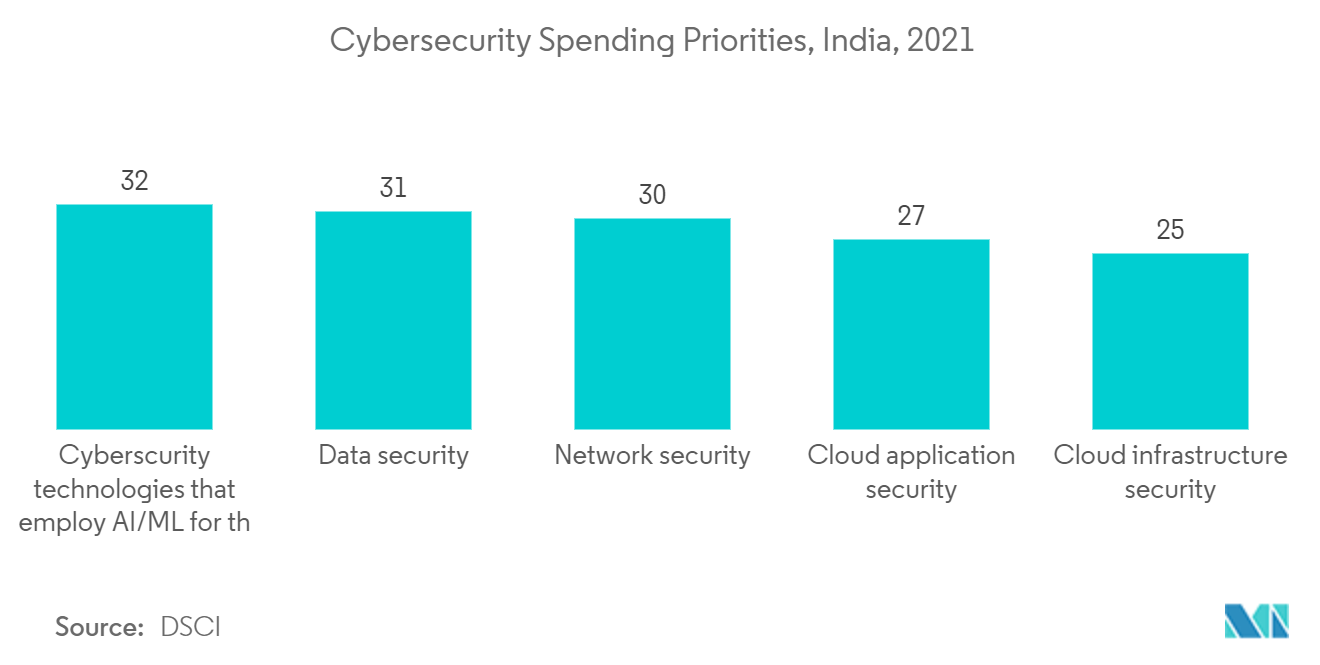
China Holds Largest Market Share in Asia-Pacific Access Control Hardware Market
- Increased terrorist threats and increased government investment to improve security are two major drivers driving access control hardware sales in China. Furthermore, China's growing economy creates a significant requirement for security systems.
- The access control system also enables users to manage access to nearly everything, including file access, workstation access, printer access, facility, building, or office access, among many others. For Instance, Government expenditures on infrastructure development projects such as the Beijing International Airport's expansion and the China-Pakistan Economic Corridor (CPEC) are driving more demand for the adoption of access control hardware systems.
- In India, the demand for the access control hardware market is significantly growing. In the future, more government and private entities will be investing in advanced security systems for workplace solutions and data protection. Factors such as the rapid deployment of access control systems across defense and commercial sectors are driving the demand in India.
- The development of technologically advanced, contactless smart cards for various applications is likely to drive the need for access control systems. The country's urbanized areas, including Chennai, Hyderabad, Mumbai, Delhi-NCR, and Bangalore, have made remarkable progress in advancing security systems pertaining to IT centers, commercial spaces, and government buildings.
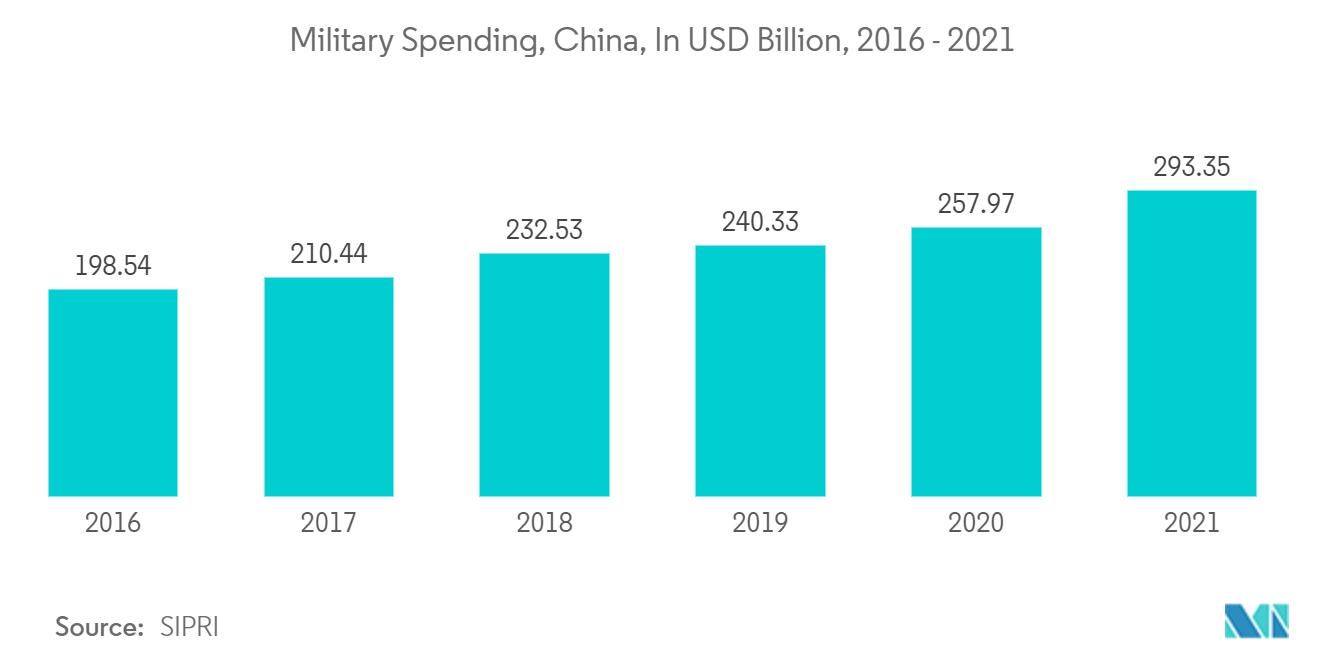
Competitive Landscape
The growing use of access control hardware systems by small and medium-sized organizations, healthcare sectors, airports, ATMs, banks, residential structures, and religious institutions is expected to propel the growth of the access control hardware market over the forecast period. The Asia Pacific Access Control Market is moderately consolidated. The increased threat of terrorist attacks and cyber-attacks in the Asia-Pacific will probably drive significant demand for the access control hardware market.
- October 2021 - Honeywell implemented facial recognition in the Bengaluru Safe City project. Honeywell India has won a contract worth about USD 66 million to execute a Safe City project, including facial recognition in Bengaluru, the capital of India's Karnataka state.
- July 2021 - IDEMIA formed a global Partnership with Bosch Building Technologies to offer a biometric layer to the Bosch Building Integration System (BIS). Bosch's software solution incorporates Idemia's contactless MorphoWave fingerprint biometric terminals and VisionPass terminals for combined 2D, 3D, and infrared imaging. The solution manages various Bosch security subsystems from a single platform, such as those used in access control, video surveillance, and intrusion systems. According to the announcement, it has over 3,000 installations globally that integrate over 10 million detectors.
Asia-Pacific Access Control Hardware Industry Leaders
-
Honeywell International India Pvt. Ltd
-
Johnsoncontrols
-
Robert Bosch GmbH
-
Gemalto N.V. (Thales Group S.A.)
-
IDEMIA ltd.
- *Disclaimer: Major Players sorted in no particular order
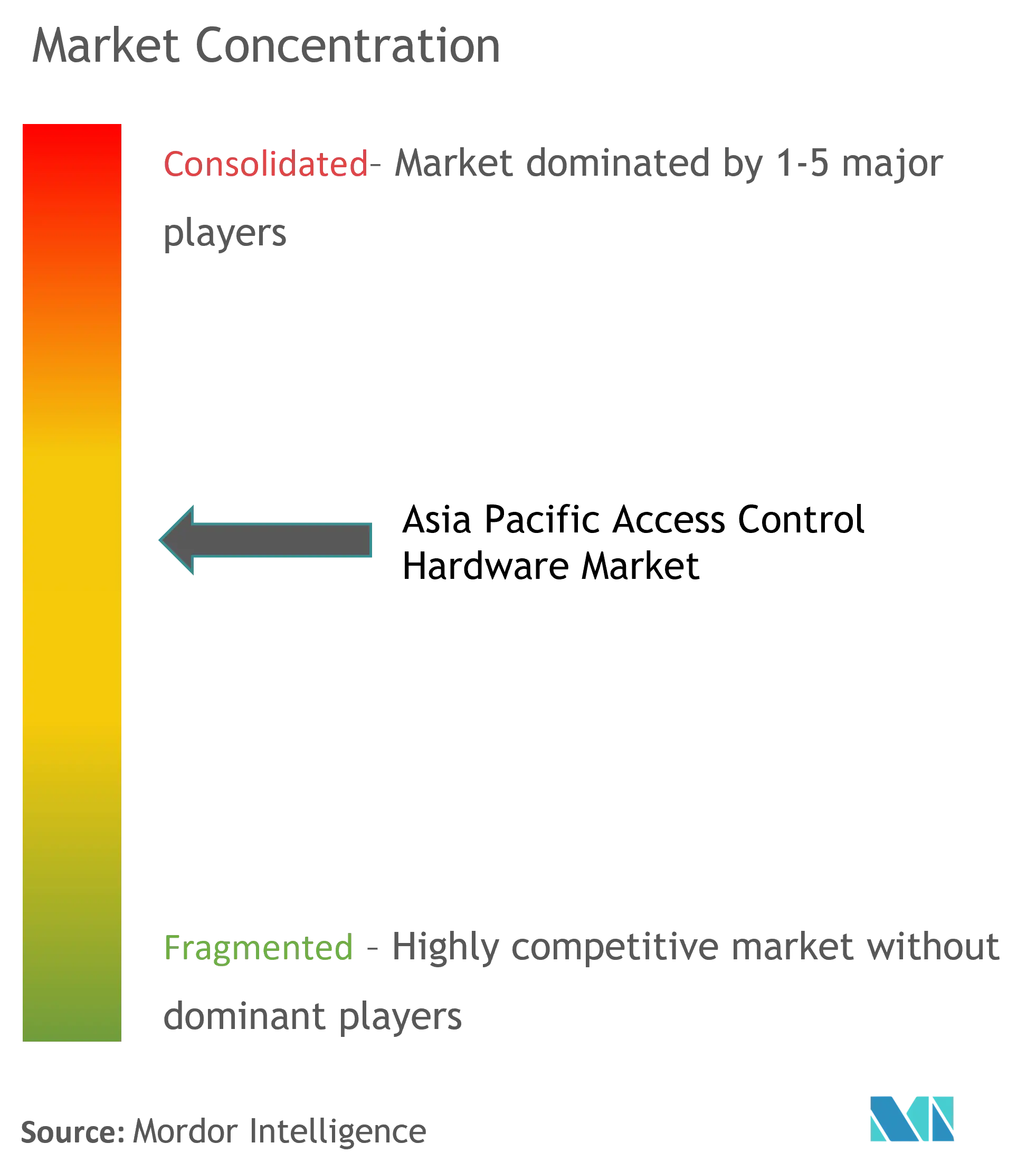
Recent Industry Developments
- June 2022 - Anviz introduced a Biometric Identification Solution VF30 Pro at Bangladesh Army Base. Anviz VF30 Pro is the new generation standalone access control reader equipped with flexible PoE and WiFi communication. The latest biometric system has the capacity to handle 3,000 users and 100,000 logs, adding its speed of authentication optimized the times on controlling the entry and exit of employees.
- June 2022 - Suprema built a back-end stability feature into a biometric access control platform. When failure occurs in the system, The system features that it automatically switches to a backup system and replicates data in real time so the company can protect mission-critical data 24/7 with no downtime.
Asia-Pacific Access Control Hardware Market Report Scope
The access control hardware industry is expanding as consumers become more interested in using cost-effective security systems. Furthermore, the advancement in biometrics, blockchain authentication, and other new technologies is attracting new customers to adopt access control hardware systems, which are projected to drive the access control hardware market moving forward. The Asia-Pacific Access Control Hardware Market is segmented By End-User Industry (IT and Telecom, BFSI, Defense and Aerospace, Healthcare, and Others), By Product Type (Card Reader and Access Control Devices, Biometric Readers, Electronic Locks, and Others), and By Geography (China, India, Japan, Australia, South Korea, Rest of Asia-Pacific)
| Card Reader and Access Control Devices |
| Biometric Readers |
| Electronic Locks |
| Others |
| IT & Telecom |
| BFSI |
| Defense & Aerospace |
| Healthcare |
| Others |
| China |
| India |
| Japan |
| Australia |
| South Korea |
| Rest of Asia-Pacific |
| By Product Type | Card Reader and Access Control Devices |
| Biometric Readers | |
| Electronic Locks | |
| Others | |
| By End-user Industry | IT & Telecom |
| BFSI | |
| Defense & Aerospace | |
| Healthcare | |
| Others | |
| By Geography | China |
| India | |
| Japan | |
| Australia | |
| South Korea | |
| Rest of Asia-Pacific |
Key Questions Answered in the Report
What is the current Asia-Pacific Access Control Hardware Market size?
The Asia-Pacific Access Control Hardware Market is projected to register a CAGR of greater than 8.6% during the forecast period (2025-2030)
Who are the key players in Asia-Pacific Access Control Hardware Market?
Honeywell International India Pvt. Ltd, Johnsoncontrols, Robert Bosch GmbH, Gemalto N.V. (Thales Group S.A.) and IDEMIA ltd. are the major companies operating in the Asia-Pacific Access Control Hardware Market.
What years does this Asia-Pacific Access Control Hardware Market cover?
The report covers the Asia-Pacific Access Control Hardware Market historical market size for years: 2019, 2020, 2021, 2022, 2023 and 2024. The report also forecasts the Asia-Pacific Access Control Hardware Market size for years: 2025, 2026, 2027, 2028, 2029 and 2030.
Page last updated on:
Asia-Pacific Access Control Hardware Market Report
Statistics for the 2025 Asia-Pacific Access Control Hardware market share, size and revenue growth rate, created by Mordor Intelligence™ Industry Reports. Asia-Pacific Access Control Hardware analysis includes a market forecast outlook for 2025 to 2030 and historical overview. Get a sample of this industry analysis as a free report PDF download.
